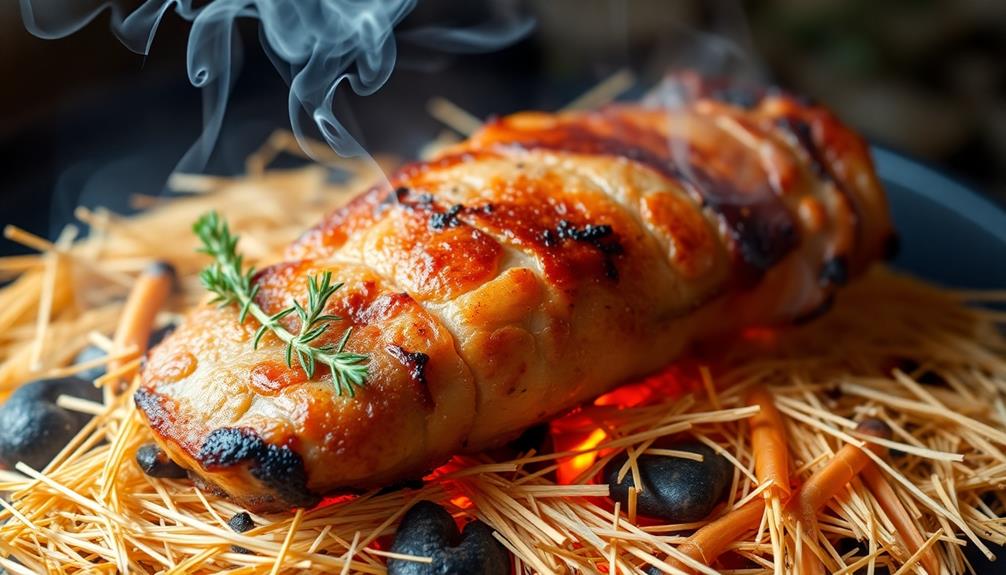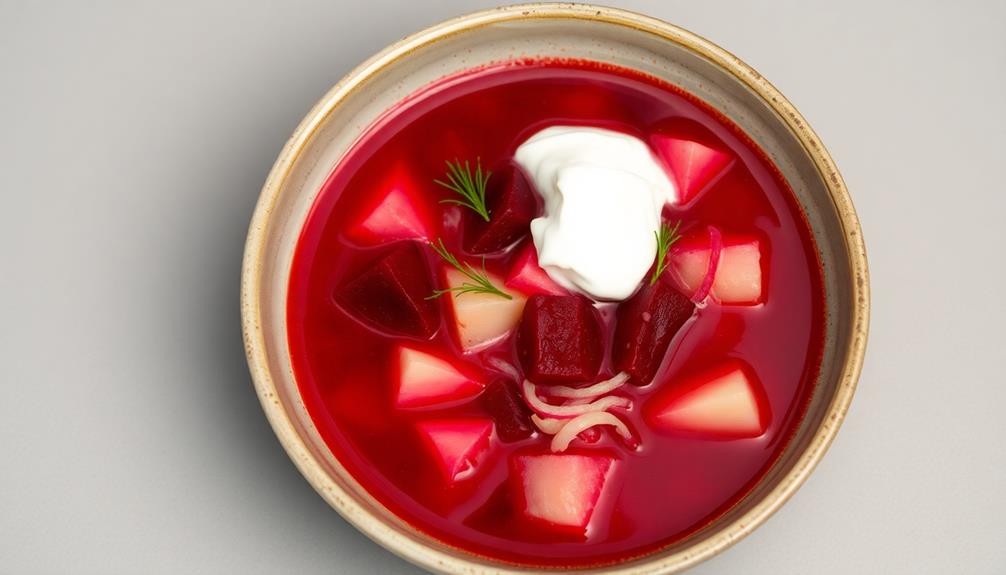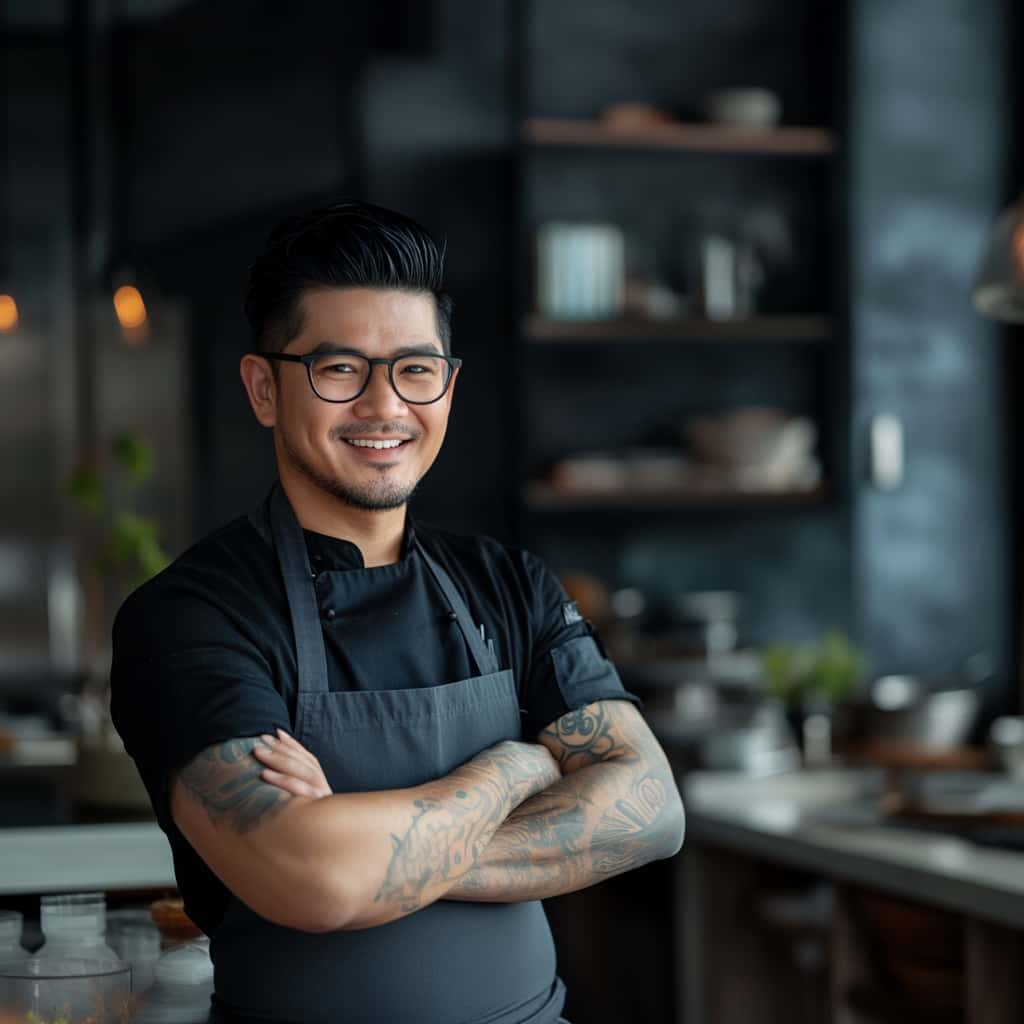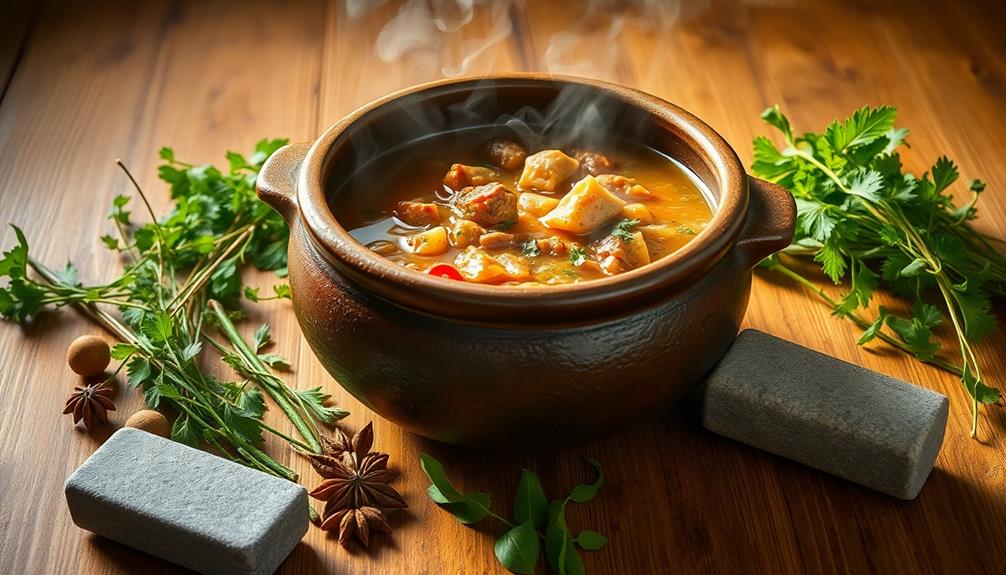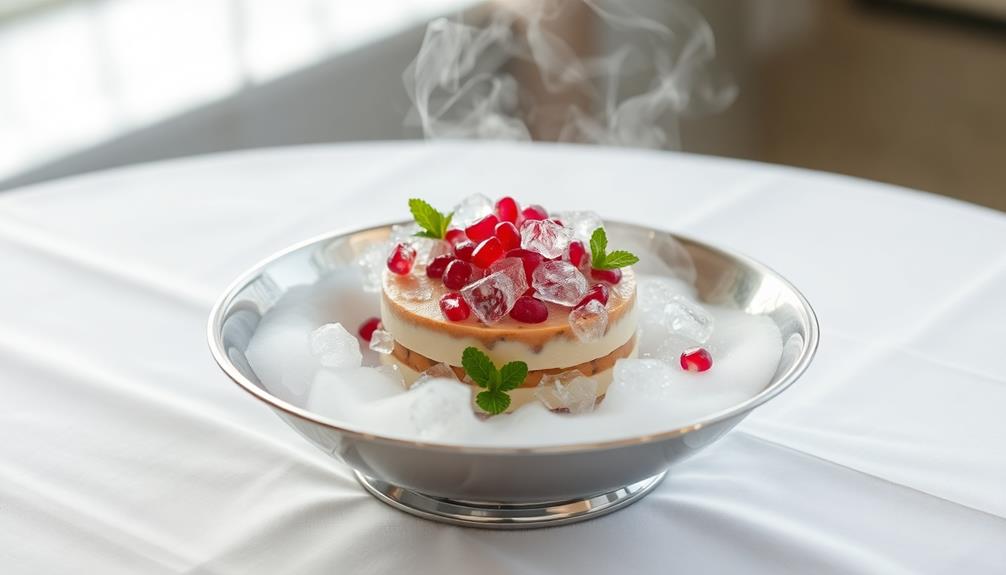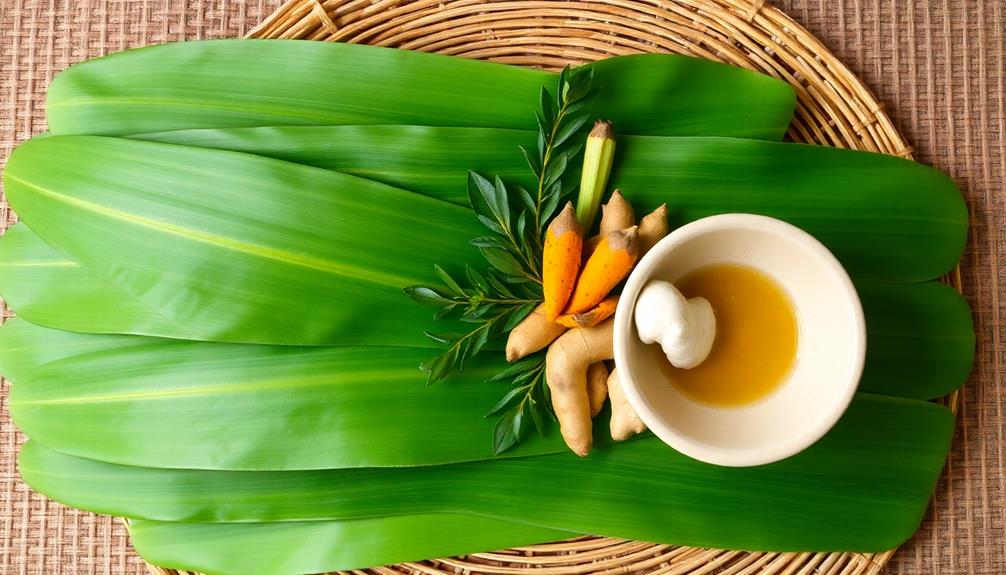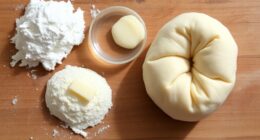Discover the captivating world of cooking with hay! You'll be amazed by the smoky, earthy flavors it adds to your dishes. From ancient traditions to modern chef innovations, this unique ingredient opens up a whole new realm of culinary possibilities. Experiment with different types of hay – each one offers its own distinct taste profile, like the mild sweetness of timothy hay or the rich earthiness of alfalfa. With techniques like infusing, smoking, and baking, you can transform simple recipes into culinary masterpieces. Dive deeper into the art of hay cooking, and unlock a world of flavorful delights.
Key Takeaways
- Cooking with hay has been practiced since ancient times, valued for its ability to add depth and complexity to dishes worldwide.
- Hay introduces unique, smoky, and earthy flavors to dishes, and various types offer different taste profiles for diverse culinary experiences.
- Cooking techniques like infusion, smoking, baking, and grilling can be used to incorporate hay into dishes and enhance their flavor.
- Hay-infused broths, smoked meats, hay-roasted vegetables, and desserts with hay provide unique and flavorful recipe ideas.
- Cooking with hay offers health benefits, including acting as a natural flavor enhancer, providing antioxidants, and adding fiber to meals.
History
Since ancient times, humans have harnessed the versatility of hay for culinary purposes. Hay, the dried grass that nourishes livestock, has long been a secret ingredient in many traditional dishes around the world. From the smoky flavors of Scandinavian smoked hams to the earthy notes in Italian breads, hay has played a crucial role in adding depth and complexity to beloved recipes.
You might be surprised to learn that hay was even used in the kitchens of ancient civilizations, like the Greeks and Romans, who prized its ability to impart a unique, almost woodsy taste to their meals. As cultures evolved, the use of hay in cooking spread far and wide, with each region developing its own specialized techniques and traditions.
Today, the art of cooking with hay is experiencing a renaissance, as chefs and home cooks alike rediscover the magic of this humble ingredient. Whether you're grilling, baking, or simmering, hay can transform the simplest dish into a culinary masterpiece.
Recipe
Hay may seem like an unconventional ingredient, but it can add a unique, earthy flavor to a variety of dishes. In this recipe, we'll be incorporating dried hay into a savory and hearty meal.
Hay is a versatile ingredient that can be used in both sweet and savory recipes. When cooked properly, it can lend a subtle, grassy note to the dish, complementing other flavors. It's important to use high-quality, pesticide-free hay to ensure the best results.
- 2 cups dried, clean hay
- 1 lb boneless, skinless chicken thighs, cut into bite-sized pieces
- 1 onion, diced
- 3 cloves garlic, minced
- 2 cups diced vegetables (such as carrots, celery, and mushrooms)
- 4 cups chicken or vegetable broth
- 1 tsp dried thyme
- Salt and pepper to taste
In a large pot or Dutch oven, sauté the onion and garlic in a small amount of oil until translucent. Add the chicken and cook until browned on all sides. Stir in the diced vegetables and dried hay, and pour in the broth.
Bring the mixture to a boil, then reduce the heat and simmer for 30-40 minutes, or until the hay is tender and the chicken is cooked through. Season with thyme, salt, and pepper to taste.
When using hay in cooking, it's important to ensure it's clean, free of pesticides, and has been thoroughly dried. Soaking the hay in water for a few hours before cooking can help soften it and release its flavors.
Additionally, be mindful of the hay's texture and adjust the cooking time as needed to achieve the desired consistency in the final dish.
Cooking Steps
Alright, let's get cooking with hay!
First, you'll need to gather some fresh hay and get a nice fire going.
Once that's ready, soak the hay in water before using it to smoke your food.
Then, simply cover your favorite dishes with the wet hay and cook them right over the flames.
Step 1. Gather Hay and Prepare Fire
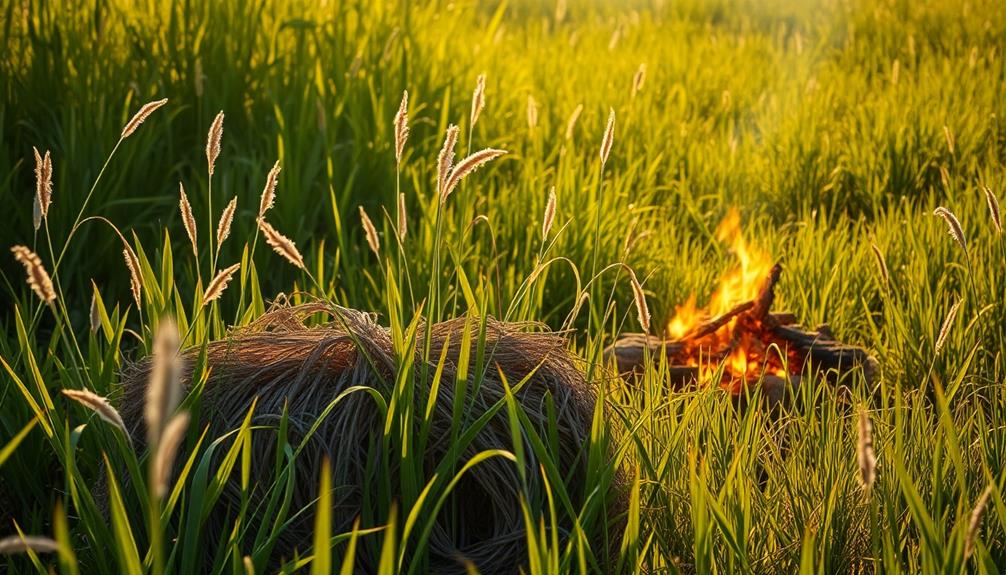
To begin, you'll need to gather a sufficient amount of dry, fresh hay from your local source. Look for a clean, grassy field or farm, and gently pluck the stems, being careful not to pull up the roots. Gather a nice, big bundle – you'll want enough to create a solid, long-lasting fire.
Once you have your hay, it's time to prepare the fire pit. Choose an open, safe area away from any buildings or trees. Clear away any debris or rocks, and use your hands to shape a shallow, circular pit. Gather some small sticks and twigs to serve as kindling, and stack them in the center of the pit.
Now you're ready to add your hay. Carefully arrange the stems in a criss-cross pattern, leaving plenty of space for oxygen flow. With a single match or lighter, gently ignite the kindling, and watch as the hay catches the flame, filling the air with a warm, earthy aroma.
Get ready – the cooking is about to begin!
Step 2. Soak Hay Before Smoking Food
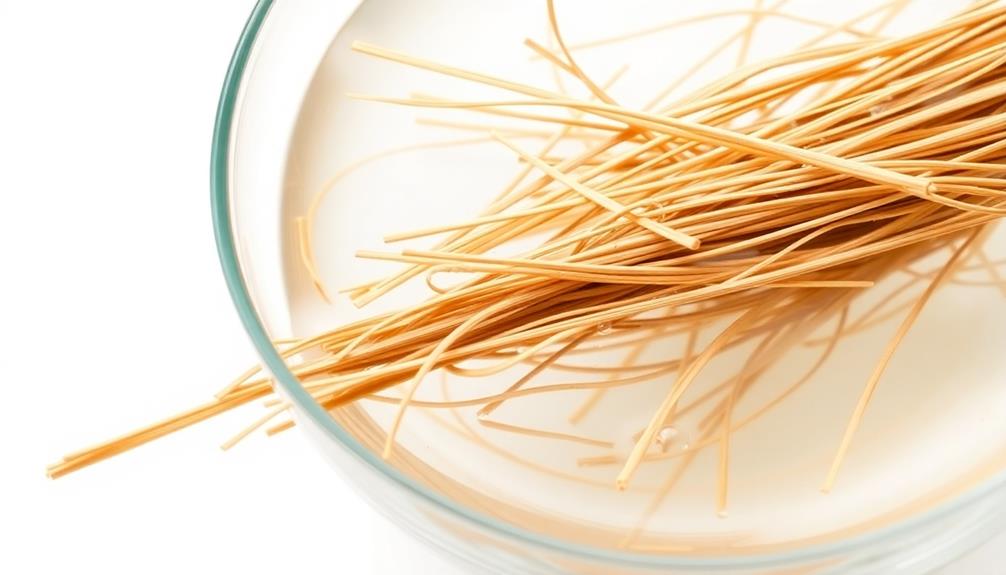
Once your hay is merrily burning, it's time to soak a portion of it in water. This essential step ensures your food will be infused with a delightful smoky flavor.
Simply take a handful of the glowing embers and drop them into a bowl of water. Watch as the hay sizzles and steams, releasing its earthy aroma. Let the soaked hay soak for about 10 minutes, giving it time to fully absorb the moisture.
Now, gently remove the damp hay from the water and place it on your cooking surface. The wetness will create a gentle, steady smoke as the hay heats up.
Arrange your food items, such as chicken, fish, or vegetables, around the smoldering hay. Cover the whole setup to trap the fragrant smoke, allowing it to permeate your ingredients.
In no time, the savory scent will have your mouth watering in anticipation. Get ready for a delightfully smoky feast!
Step 3. Cover Food With Hay
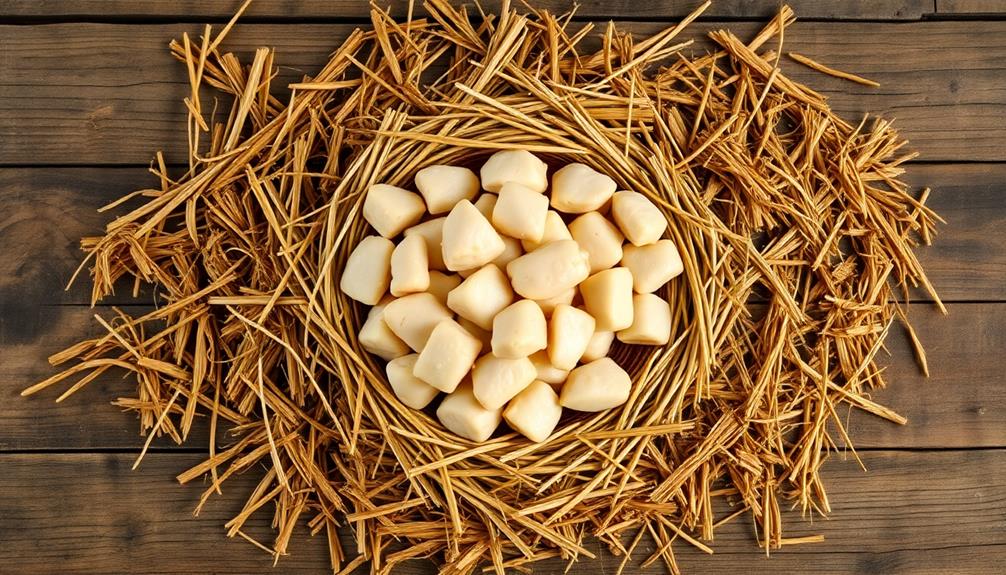
With the smoldering hay placed on the cooking surface, it's time to arrange your food items around it. You can lay the food directly on the hay or use a cooking vessel like a cast-iron skillet. Either way, make sure the food is in a single layer, so it cooks evenly.
The hay will infuse your ingredients with a wonderful smoky aroma and flavor as they sizzle away. As the hay continues to smolder, the smoke will envelop the food, gradually imbuing it with that rustic, campfire-like taste. You can even tuck some extra sprigs of hay around the edges to create more smoke.
Just be careful not to let the hay flame up, or it could burn your food. Once the food is cooked to perfection, use tongs or a fork to carefully remove it from the hay.
The delicate, earthy flavor will delight your taste buds, making this a truly unique and memorable cooking experience. Utilizing the saltcrusted baking technique adds a rich, savory depth to the dish that will leave your guests asking for the recipe. The combination of the natural juices from the ingredients and the salt creates a tender, succulent texture that is guaranteed to impress. Elevate your culinary skills and treat yourself to the incredible flavors that only the saltcrusted baking technique can provide.
Step 4. Cook Food Over Hay
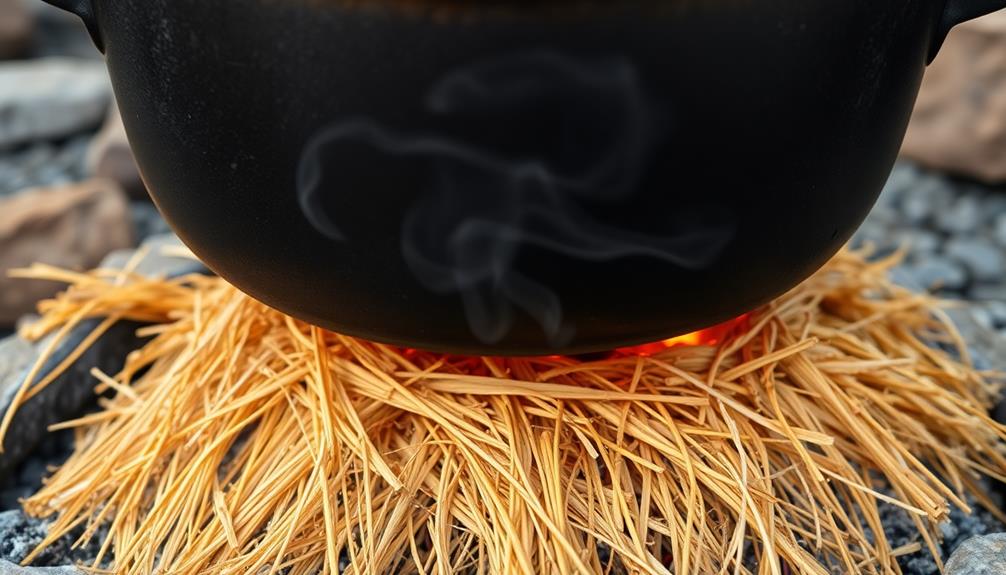
Now that you've carefully arranged your food items around the smoldering hay, it's time to start cooking. The delicate wisps of smoke will gently wrap around your ingredients, infusing them with a subtle, earthy flavor.
Watch as the hay's warmth radiates, slowly kissing your food to perfection. As the hay burns, adjust the placement of your dishes, ensuring even cooking. The sizzle and crackle of the hay will have your mouth watering in anticipation.
Inhale the captivating aroma – it's a symphony of rustic, smoky notes that will transport you to a cozy country kitchen. Resist the urge to peek too often, as letting the heat escape can impact the cooking process.
Trust your senses and let the hay work its magic. In no time, your meal will be ready to enjoy, with a unique, hay-smoked twist that will have your family and friends clamoring for seconds.
Step 5. Let Food Rest Before Serving
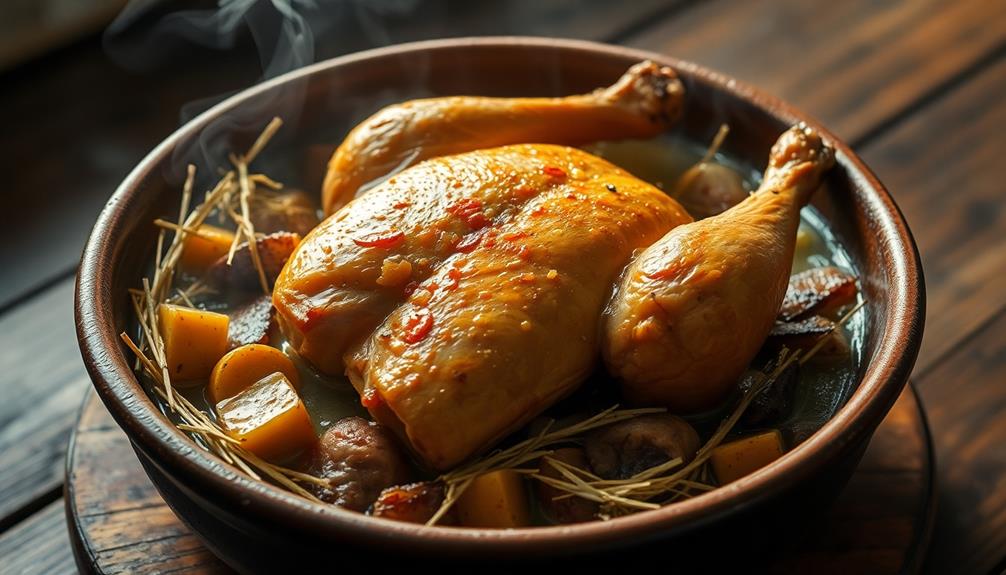
After your food has been blanketed in the hay's gentle embrace, let it rest for a few minutes before serving. This resting period is crucial, as it allows the flavors to meld and the textures to become perfectly tender.
Imagine the aroma wafting through the air as the hay-infused dish sits patiently, just waiting to delight your taste buds.
During this time, the juices will redistribute throughout the food, ensuring every bite is bursting with that delightful smoky essence. You can almost hear the sizzle as the heat gradually subsides, leaving behind a mouthwatering masterpiece.
When the timer dings, carefully uncover your creation and prepare to be swept away by the depth of flavor. Get ready to savor each and every morsel, as the hay's magic has transformed your meal into a true culinary adventure. Bon appétit!
Final Thoughts
Cooking with hay is a unique and intriguing culinary technique that deserves further exploration. You never know what kind of smoky, earthy flavors you might discover! Imagine the delight of adding a hint of hay to your favorite dishes, creating a one-of-a-kind taste experience.
As you continue on your hay-cooking journey, remember to keep an open mind and experiment with different types of hay. Each variety can impart its own subtle nuances, so don't be afraid to try new things. Who knows, you might just find your new signature dish!
The possibilities are endless when it comes to cooking with hay. So why not give it a try? Embrace the adventure, let your creativity shine, and have fun in the kitchen.
After all, the best recipes are the ones that bring people together and put a smile on their faces. Bon appétit!
Frequently Asked Questions
Is Cooking With Hay Safe for My Health?
Cooking with hay may not be the safest option for your health. While it can impart a unique smoky flavor, the potential risks of inhaling hay particles or consuming unknown substances outweigh any potential benefits. It's best to explore safer cooking methods.
How Does Hay-Smoked Food Differ From Charcoal-Smoked Food?
Charcoal-smoked food has a stronger, more intense smoke flavor compared to hay-smoked food. Hay-smoked food typically has a milder, more subtle smoky taste due to the lower temperature and less intense smoke generated from burning hay.
Can I Use Any Type of Hay for Cooking?
You can use various types of hay for cooking, but not all will provide the same results. Certain varieties like timothy or orchard grass work better than others. Consider experimenting to find the flavor profile that suits your preferences.
How Long Does Hay-Smoked Food Last Compared to Others?
How long your hay-smoked food lasts depends on several factors. Generally, it'll keep a bit longer than conventionally smoked foods, but proper storage is key. Enjoy your smoky creations, but be mindful of food safety guidelines for maximum freshness.
What Are the Best Food Pairings for Hay-Smoked Dishes?
When it comes to hay-smoked dishes, you'll find they pair best with earthy, rustic ingredients. Try them with root vegetables, grains, or hearty meats to complement the smoky, grassy notes. Experiment to discover your perfect flavor combinations.
